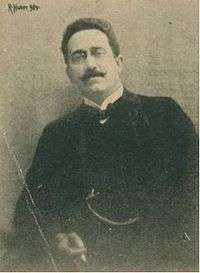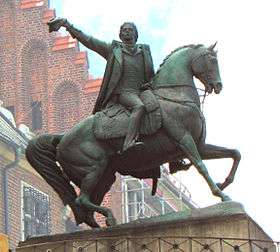Antoni Popiel

Antoni Popiel (13 June 1865 Szczakowa, Galicia (now Jaworzno) - 7 July 1910 Lubien near Lviv) was a Polish sculptor.[1]
Life
He studied at the School of Fine Arts, Kraków from 1882 to 1884, with Izydor Jabłoński, Władysław Łuszczkiewicz and Walery Gadomski. He studied at the Academy of Fine Arts Vienna, from 1885 to 1888.
In 1888, he studied in Berlin and Florence, and returned to Poland. He lived first in Kraków, then in Lviv, including a job as assistant to Leonard Marconi, in the Cathedral of drawing and modeling of the Lviv Polytechnic. He remained connected with it for life. He stayed in Florence, from 1895 to 1897, where he made a statue of Justitia for the lobby of the Palace of Justice in Lviv (1896), and the design of the monument of Józef Korzeniowski, which was then erected in Brody. In 1898, he won a competition for a monument to Adam Mickiewicz University in Lviv. The monument, in the form of a tall column topped with a torch of Poetry, was unveiled on 30 October 1904. After the death of Leonardo Marconi, Antoni Popiel continued work on the statue of Tadeusz Kosciuszko in Kraków. The monument stood on the Wawel hill. During World War II, in 1940, it was destroyed by the Germans, and reconstructed in 1960.
In 1900, he designed sculptures for the Grand Theatre in Lviv - tympanum, stone caryatids; and statues of the Muses. In 1907, he participated in the competition for a monument to Tadeusz Kosciuszko in Washington, D.C. Although he won second prize, President Theodore Roosevelt selected his design for implementation.
His brother was the panorama painter, Tadeusz Popiel.
Gallery
-

Kosciuszko Monument, Kraków
-

Adam Mickiewicz Column, Lviv
-
Kornel Ujejski Monument
References
- ↑ Biographical notes @ Moje Jaworzno.
External links
- "Antoni Popiel", Polish wikipedia

